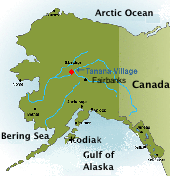An Introduction
My first job after moving to the United States from Norway was to work on recovery projects focused on salmon populations in California for the National Marine Fisheries Service. One day, my coworker asked me about Hucho hucho in Europe. Although I come from Europe, I drew a blank. “The large river salmon,” he said. I had just started learning about the many types of salmon in the Pacific Northwest, and I was intrigued. As far as I was concerned, Europe only had generic salmon and brown trout, and this new genus spurred my interest in the diversity of these widespread species.
Salmon and trout are some of the most well-known fish worldwide. Their flesh is esteemed for its taste and consistency; it is found on menus of world-class restaurants. Salmon and trout are also the fish with capital F when it comes to recreational fishing, and it is one of the most successfully farmed fish, now common on the family dinner table all over the world.
Still, little attention has been given to the amazing diversity the salmon family of fish represents – and the peril this diversity is in. Few people even know that there are several species of trout and salmon; a regular restaurant menu will simply list “salmon,” despite the fact that there are six different species native to the United States alone. And each species varies in taste and consistency of their flesh.
However, more important than the diversity of species on the menu is the importance of these fish to people and their cultures. Where salmonids and people overlap, there has always been a strong connection between them. These fish not only represent food, but also a diversity of cultures, traditions and identities. Thus, when we lose the diversity of these fish, we lose not only fish, but also our own cultural heritage. Every salmon and trout has a story, and that story is about us.
As I learned more about the diversity of salmon and the threats it faces, I decided I wanted to see, and maybe taste, them all. In 2010, my fantasy started to become reality with the preparation and launch of The Great Salmon Tour, a project focused on recording and protecting salmonid biodiversity and exploring the relationships that people have to these animals. My goal is to show how a relationship between human beings and the environment has shaped our world's diverse human cultures.
About People
The Great Salmon Tour launches expeditions that chronicle the interconnection between people and a resource. The taxonomic family Salmonidae is a circumpolar group of fish that has in its evolution diverged into a diverse number of species. And the cultures and traditions of the people and communities that rely upon these species for food, income, or recreation are as diverse as the species themselves. Thus, by documenting the expeditions through narratives, media, and blog (and eventually wit a full feature documentary), the Great Salmon Tour expeditions show the incredible diversity of both salmonids and people and their cultures. In this way the expeditions show how individual stories are part of the larger, universal story of diversity. By covering salmon, a fish familiar to so many, the Great Salmon Tour shows that biological diversity is not about saving tigers in India or some bugs that no one cares about. It is as much about taking care our own wellbeing and cultural diversity as it is about conserving the diversity of species.
About the Fish
o understand salmon diversity and human-salmon relationships, it is necessary to cover some of the basics of salmon taxonomy and biology. The salmon and trout we have on our dinner plates belong to a family of fish called salmonidae that contains more than 200 species of fish, all native to the higher latitudes of the northern Hemisphere. Within this area, they have a circumpolar distribution – meaning they are found in North America, Europe and Asia. Common names for the different salmonids are salmon, trout, grayling, whitefish and charr.
The term salmon has neither a taxonomic nor a biological meaning, but is a term that is used based on people's perception of what salmon are. In the United States alone we have six species we call salmon: king, sockeye, chum, coho and pink salmon – all of which are Pacific salmon (genus Oncorhynchus) – and, on the other side of the Cascades, Atlantic salmon (Salmo salar). The fish we usually call salmon are anadromous: they spawn – or lay their eggs – in freshwater where the offspring then live for the first years of their lives. They then migrate to the ocean, where they feed and grow until ready to reproduce.
During the migration to the ocean they increase several fold in size, from a few inches to several feet long. Once they mature, they return to their natal river to spawn. The return is synchronized with a large number of salmon returning at the same time of the year – the salmon run. This provides a seasonal event with a high availability of large fish that are relatively easy to catch. Because of their marine phase, the fish contain important marine nutrients and a high fat content that are not usually available far inland from the ocean, making them an important part of the food supply for many predators, including people.
